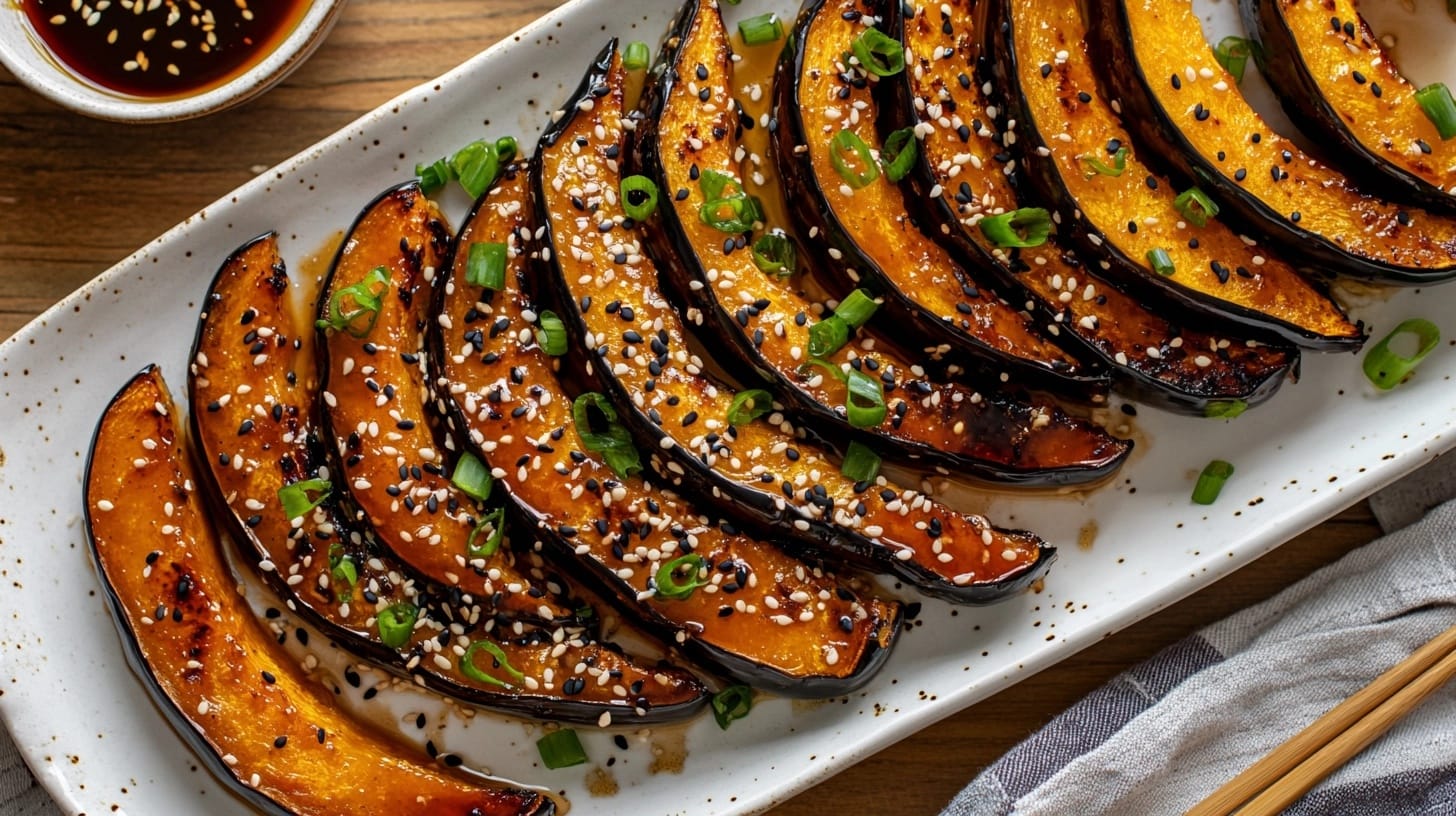Cooking is a journey of discovery, especially when working with versatile ingredients like kabocha and butternut squash. These two winter squashes have captured the hearts of home cooks and foodies worldwide. But you may wonder, Are kabocha and butternut squash the same? While both are flavorful, nutrient-packed, and perfect for a variety of dishes, they each bring something unique to the table.
In this guide, we’ll explore the key differences between these squashes, their nutritional benefits, and their culinary applications. Whether you’re an experienced chef or a kitchen newbie, understanding these differences can help you create delicious meals that are not only satisfying but also exciting to prepare. Let’s dive in and uncover what makes these squashes stand out, especially in Asian-inspired cuisine!
What Are Kabocha and Butternut Squash?
To truly appreciate kabocha and butternut squash, it’s important to understand their origins and roles in global cuisines. Both are members of the winter squash family, but they come from distinct culinary traditions that influence their flavors and uses.
Kabocha squash, also known as Japanese pumpkin, hails from Asia and is a staple in Japanese and Korean cooking. It boasts a firm, dark green rind with pale green stripes and vibrant orange flesh inside. This squash has a sweet, nutty flavor that’s often compared to sweet potatoes or chestnuts. It’s a go-to ingredient for soups, stews, and even tempura due to its dense, creamy texture.
Butternut squash, on the other hand, is a Western favorite often associated with comfort food. Its smooth, tan skin and bell-like shape make it easy to identify. Inside, the bright orange flesh is soft and buttery, making it perfect for purees, soups, and even desserts. This squash’s natural sweetness shines in dishes like roasted vegetable medleys and baked casseroles.
Interestingly, while kabocha is traditionally used in Asian-inspired dishes, butternut squash is an excellent substitute or addition to fusion recipes. Its subtle sweetness and creamy texture make it a versatile option in any kitchen.
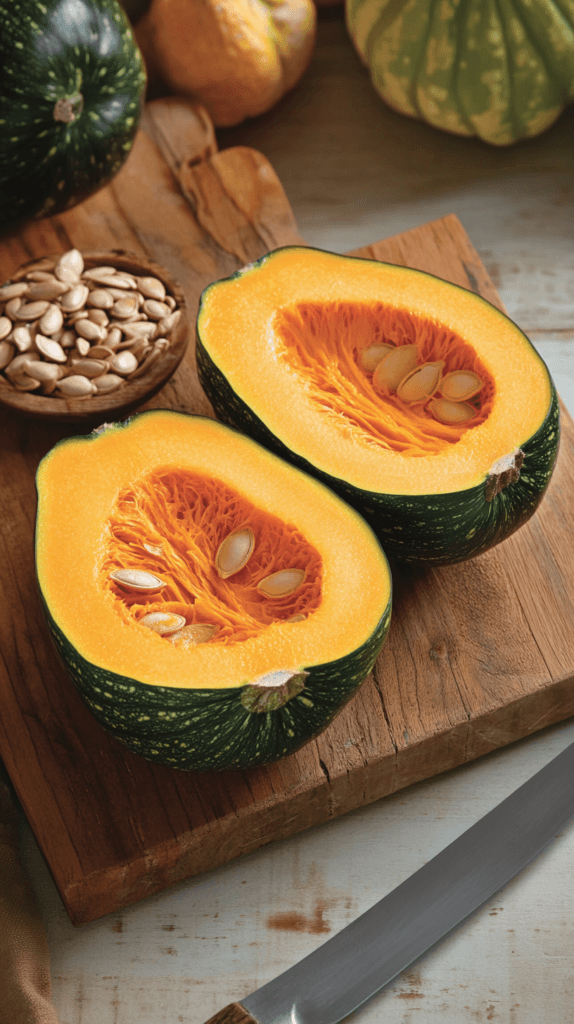
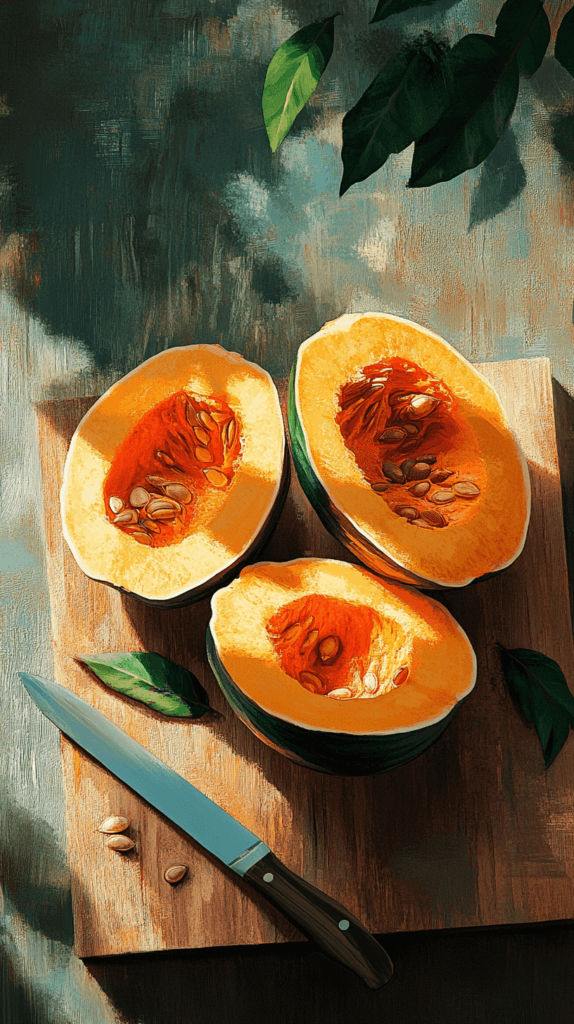
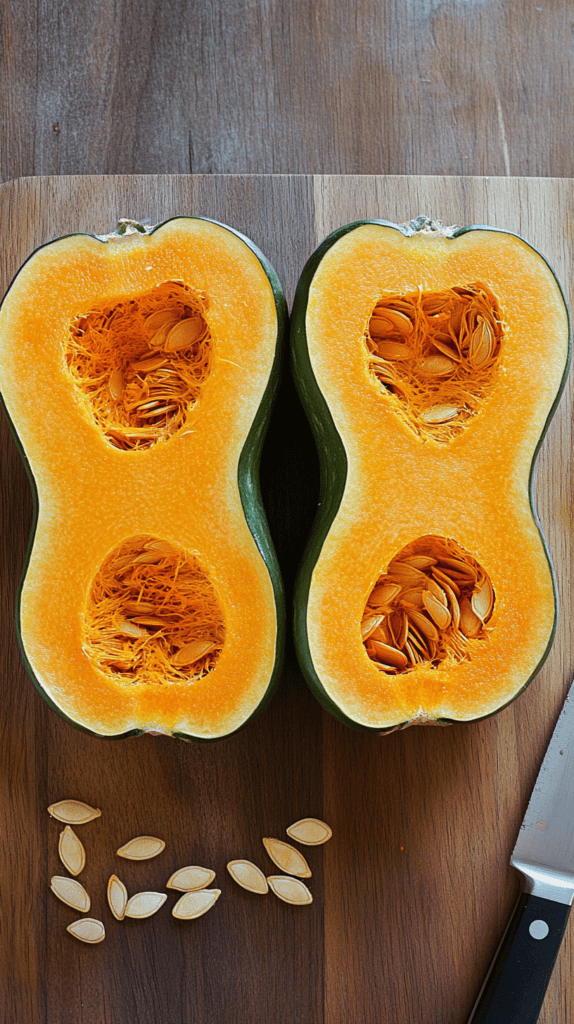
Kabocha Squash vs. Butternut Squash: Key Differences
While both squashes are delicious and versatile, they differ significantly in flavor, texture, appearance, and even availability. Understanding these differences can help you decide which one is best for your dish.
In terms of flavor, kabocha squash stands out with its nutty, earthy sweetness, while butternut squash is known for its caramel-like, buttery taste. The texture also sets them apart—kabocha is dense and firm, making it ideal for roasting or braising, whereas butternut is softer and creamier, perfect for purees or soups.
When it comes to appearance, kabocha’s dark green rind with pale stripes contrasts sharply with butternut’s smooth, tan exterior. Kabocha is squat and round, while butternut has an elongated neck and bulbous base. Availability and price further distinguish the two. Kabocha is often found in Asian markets and can be pricier, while butternut squash is widely available in grocery stores and is generally more affordable.
Choosing between these squashes depends on the flavor profile and texture you’re aiming for in your dish. For hearty, earthy dishes, kabocha is the way to go. If you want a creamy, sweet element, butternut squash is the better choice.
Nutritional Comparison
Both kabocha and butternut squash are packed with nutrients, making them excellent choices for health-conscious cooking. However, they do have slight differences in their nutritional profiles.
| Nutrient | Kabocha Squash (1 cup) | Butternut Squash (1 cup) |
|---|---|---|
| Calories | 30 | 63 |
| Carbohydrates | 7 grams | 16 grams |
| Fiber | 1.5 grams | 3 grams |
| Vitamin A | 70% of daily value | 127% of daily value |
| Vitamin C | 15% of daily value | 35% of daily value |
Kabocha squash is significantly lower in calories and carbohydrates, which makes it an outstanding option for those following low-carb or keto diets. Furthermore, it offers a moderate amount of fiber and a generous dose of beta-carotene, a nutrient known to support eye health and enhance vision. On the other hand, butternut squash, while slightly higher in calories and carbohydrates, delivers a higher concentration of vitamin A and more fiber. As a result, it plays a vital role in aiding digestion and promoting gut health.
Moreover, both squashes are packed with antioxidants and other essential nutrients that actively work to boost your immunity, improve skin health, and provide sustained energy throughout the day. Additionally, their versatility makes them easy to include in a wide range of dishes. For this reason, incorporating either kabocha or butternut squash into your meals is not only a delicious choice but also a wise decision for anyone seeking nutrient-rich, plant-based options to enhance their overall diet and well-being.
How to Choose and Store Winter Squash
The quality of your squash can truly make or break your dish; therefore, it’s absolutely essential to know how to select and store them properly. By following these straightforward tips, you can ensure that your squash remains fresh and flavorful for all your recipes.
When selecting kabocha squash, you should first look for one that feels heavy for its size, as this indicates it is dense and fresh. Additionally, its rind should be hard, unblemished, and have a dull surface, which is a reliable sign of ripeness. On the other hand, when choosing butternut squash, focus on finding one with a firm, smooth skin that is free of any soft spots or blemishes. Furthermore, make sure the stem is intact and dry, as this detail can help prolong its shelf life significantly.
Proper storage is equally important for maintaining the quality of your squash. For uncut kabocha and butternut squashes, storing them in a cool, dry place can easily keep them fresh for up to a month. However, once the squash is cut, you should wrap the pieces tightly in plastic wrap or, alternatively, place them in an airtight container. Moreover, storing them in the refrigerator will ensure they stay fresh and ready for use for up to a week. By taking these small yet crucial steps, you can always have perfectly fresh squash on hand for your favorite recipes.
Culinary Uses of Kabocha Squash
Kabocha squash is a superstar in Asian-inspired dishes, thanks to its dense texture and rich, nutty flavor. Whether roasted, steamed, or braised, it holds up beautifully in a variety of recipes.
Popular Cooking Methods for Kabocha
- Roasting: Brings out its natural sweetness and creates a caramelized crust.
- Steaming or Braising: Retains its creamy texture, making it perfect for soups and curries.
- Tempura: A classic Japanese preparation that highlights its unique flavor.
One of the best things about kabocha is that its skin becomes tender and edible when cooked, so there’s no need to peel it. This not only saves time but also adds fiber to your dish.
Highlight Recipe: Miso-Glazed Kabocha Squash
This recipe is a perfect example of how kabocha shines in Asian-inspired dishes. The combination of sweet and savory flavors creates an unforgettable side dish.
| Ingredients | Quantity |
|---|---|
| Kabocha squash | 1 small |
| Miso paste | 2 tablespoons |
| Soy sauce | 2 tablespoons |
| Maple syrup | 1 tablespoon |
| Sesame oil | 1 tablespoon |
| Olive oil | 1 tablespoon |
Roast slices of kabocha squash, and then coat them with this rich, flavorful savory-sweet glaze. As a result, you’ll have a delicious dish that pairs beautifully with steamed rice or noodles. Furthermore, it can also be served as a standalone side dish for a well-rounded meal.
Explore more vegan squash recipes here.
Culinary Uses of Butternut Squash
Butternut squash is loved for its versatility and smooth, creamy texture. Its natural sweetness makes it an excellent ingredient for both savory and sweet recipes. Whether you’re roasting it for a hearty side dish or blending it into soups, sauces, or desserts, butternut squash always adds a touch of warmth and flavor to your meals.
Popular Cooking Methods for Butternut
- Pureeing: Perfect for soups, sauces, and baby food.
- Roasting: Enhances its sweetness and creates caramelized edges.
- Blending: Works well in pasta sauces, smoothies, or desserts.
Butternut squash pairs beautifully with spices like cinnamon, nutmeg, and smoked paprika, which complement its sweet flavor.
Highlight Recipe: Roasted Butternut Squash with Maple Glaze
This simple yet delicious dish showcases the natural sweetness of butternut squash.
| Ingredients | Quantity |
|---|---|
| Butternut squash | 1 medium |
| Olive oil | 2 tablespoons |
| Maple syrup | 1 tablespoon |
| Cinnamon | ½ teaspoon |
Toss butternut cubes with olive oil, maple syrup, and cinnamon before roasting until golden brown.
Check out “Delicious ways to use sweet potatoes and squash” here.
Best Squash for Asian-Inspired Recipes
When it comes to Asian cooking, kabocha squash is often the top choice because of its firm texture and nutty, slightly sweet taste. It works well in dishes like curries, stir-fries, and soups. Plus, its ability to stay firm while cooking makes it perfect for many traditional recipes.
But, butternut squash can also be a great option, especially for fusion meals. Its smooth texture and mild sweetness can bring a new twist to classic Asian dishes, giving them a fresh and exciting flavor.
For instance, you could make a creamy kabocha squash curry with coconut milk for a rich, authentic meal. Or, you can try a butternut squash miso soup for a fun and tasty spin on a well-loved dish. Both are easy to make and delicious to eat.
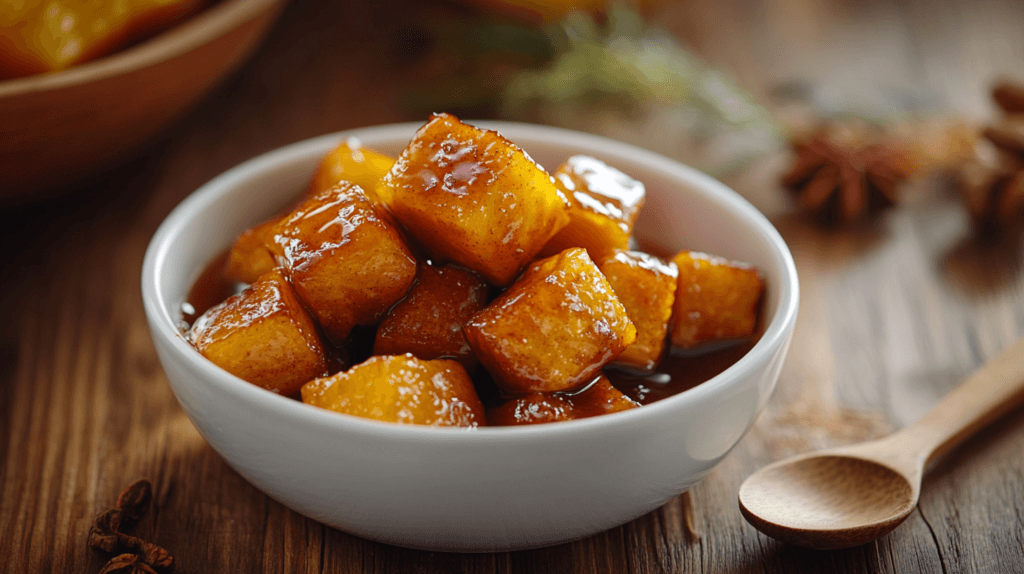
Cooking Tips for Winter Squash
Peeling and cutting squash can often feel daunting; however, these simple tips can make the process much easier and more manageable.
For kabocha, it is best to use a sharp knife to slice it into wedges. Additionally, its skin softens beautifully during cooking, so there’s no need to peel it beforehand, which saves both time and effort. On the other hand, for butternut squash, a sturdy vegetable peeler works best to remove the skin easily. After peeling, you can proceed to cut it into cubes or slices, depending on your recipe requirements.
Furthermore, roasting is one of the most popular methods for preparing both squashes, as it not only enhances their natural sweetness but also caramelizes their sugars to perfection. Alternatively, steaming or braising offers another excellent option, as these methods preserve their creamy texture while simultaneously infusing them with the delightful flavors of your chosen seasonings or broth.
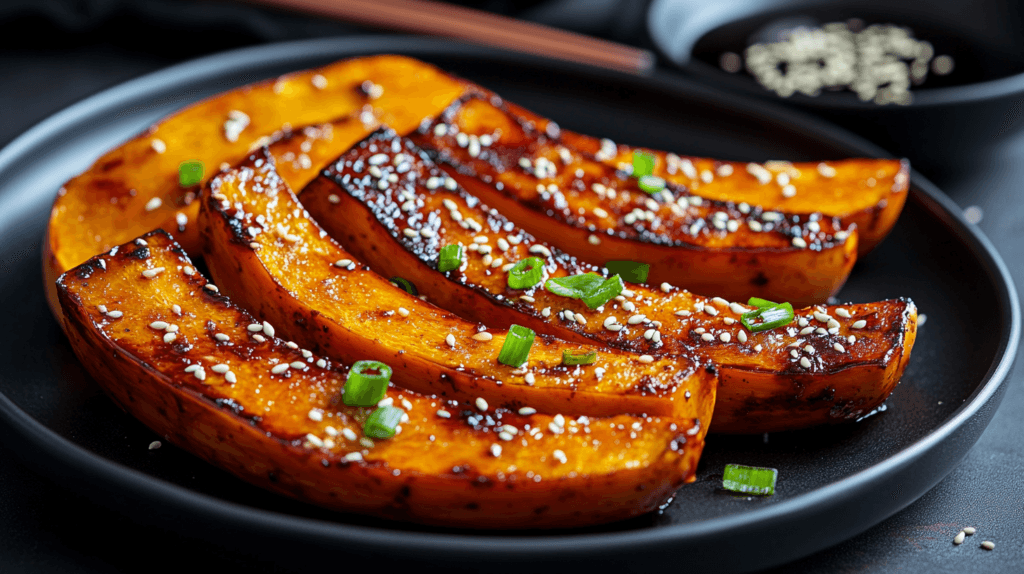
FAQs
Is kabocha and butternut squash the same?
No, kabocha and butternut squash are not the same. While both are winter squashes, they differ in flavor, texture, appearance, and culinary uses. Kabocha squash, often called Japanese pumpkin, has a dense, nutty, and slightly sweet flavor, while butternut squash is creamier, softer, and has a buttery, caramel-like sweetness.
What squash is closest to kabocha squash?
Buttercup squash is the closest variety to kabocha squash in terms of flavor and texture. Both have dense, sweet flesh and a similar nutty undertone. Other alternatives include acorn squash or delicata squash, though they may have slight differences in sweetness and texture.
What’s the difference between kabocha and buttercup squash?
Kabocha squash and buttercup squash are very similar but differ slightly in taste and appearance. Kabocha has a nuttier and sweeter flavor, with a dark green rind that often has pale stripes. Buttercup squash is slightly less sweet and typically has a rounder shape with a characteristic “button” or ridge on the bottom.
What is the American name for kabocha squash?
Kabocha squash is often referred to as “Japanese pumpkin” in the United States. This name highlights its Asian origins and resemblance to pumpkin, though it has a distinct flavor and texture.
Conclusion
Both kabocha and butternut squash are incredibly versatile, nutrient-rich, and undeniably delicious. Additionally, whether you’re preparing a traditional Japanese curry or experimenting with exciting fusion flavors, these squashes offer endless culinary possibilities. Moreover, their unique textures and distinct flavors can effortlessly transform any meal into something truly extraordinary.
Therefore, why not consider incorporating both into your cooking repertoire? After all, you might just end up discovering a new family favorite that everyone will adore.

